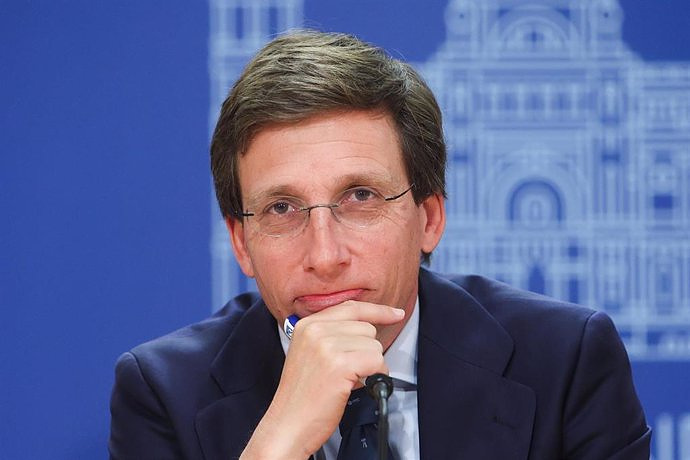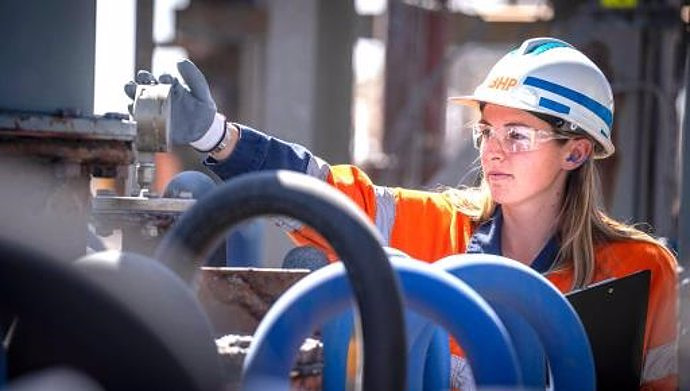Identifies the participation in the Steering Committee of the six ETA leaders investigated in the National Court
MADRID, 19 Dic. (EUROPA PRESS) -
The General Information Commissioner of the National Police has sent a new police report to the judge of the National Court investigating the attack perpetrated by ETA against the Santa Pola (Alicante) barracks in 2002, in which the "total control" is highlighted. who was at the top of the terrorist organization when the attack took place that resulted in the murder of six-year-old Silvia Martínez Santiago and 57-year-old Cecilio Gallego Alaminos.
The agents of the National Police Corps thus respond to the request of magistrate Manuel García Castellón, who last March reopened --at the request of Dignity and Justice-- the summary of the attack against the Santa Pola barracks and urged the Civil Guard - which delivered its report at the end of November - and to the National Police so that they could send it all the data on the members of the leadership of the gang at the time of the events.
It should be remembered that in this case the National Court sentenced the ETA members Andoni Otegi Eraso, 'Iosu', and Óscar Celarain Ortiz, 'Peio', to 843 years in prison in 2012, considering it proven "without any kind of doubt" that they were the material authors of the attack against the Santa Pola (Alicante) barracks, which the gang perpetrated on August 4, 2002. Now, the head of the Central Investigating Court Number 6 is investigating who the masterminds of said attack were.
In a report dated December 2, to which Europa Press has had access, the investigators review the references that appear in the Police about the six ETA leaders who have been under investigation since last July in this procedure: Juan Antonio Olarra Guridi , alias 'Juanvi'; Ainhoa Múgica, alias 'Olga'; Felix Ignacio Esparza, alias 'Navarro'; Mikel Albisu, aka 'Mikel Antza'; Ramón Sagarzazu, alias 'Ramontxo', and María Soledad Iparraguirre, alias 'Anboto'.
In 166 pages, the agents explain that the identification of these six ETA members comes mainly from their supposed integration into the so-called Executive Committee or, according to the last name used by ETA itself, ZUBA, which is the acronym for Zuzendaritza Batzordea or Committee Director, Management Committee.
"The studies and analyzes carried out by this CGI (General Information Commissioner) lead to the conclusion that in August 2002 -when the attack in Santa Pola took place- the ZUBA of ETA was made up of at least those responsible for five large apparatuses: military, logistical, political, international and treasury/finance, noting that at the head of each one of them was a high-ranking officer of the gang, except for the Military, whose leadership was carried out jointly and in solidarity by Juan Antonio Olarra and Ainhoa Múgica", say the researchers.
The Police specified that "on the date the attack" in Santa Pola was committed, the "top leaders of the military apparatus" were Olarra and Múgica, who "jointly assumed the direction, impulse, control and coordination of different substructures that made possible the activity of one of these, the recipient of all efforts, which encompassed the different armed commandos that ETA kept operational during the period in which both exercised their managerial responsibilities".
In their report, the agents attribute names and surnames to the "top managers" of each of the five areas mentioned. In addition to pointing out Olarra and Múgica as responsible for the "military" part; the Police places Esparza in the "logistical" section; Albisu on the "political" side; to Sagarzazu in the "International" area; and Iparraguirre in the "finance" section.
The National Police explains that the Executive Committee of ETA "worked collegiately, and it made strategic and sometimes tactical decisions." As specified in its conclusions, "this function included not only the determination of the political and military strategic line, but also the design, planning, coordination, direction and sometimes also the order or authorization to carry out the terrorist attacks that were materialized. by the operational commands".
The agents notify the National Court that these functions "materialized specifically, among other terrorist activities, in the so-called summer campaigns, in which the attack that is the subject of this report, committed on August 4, 2002 in Santa Pola".
They also stress that the ZUBA --"as the highest directing and coordinating body"-- was in charge, through the structures that they directed, of "providing the necessary personal and material means to the operational armed commandos for the commission of the attacks".
The investigators insist in their report that "ETA is a highly structured and hierarchical organization" in which each member reported to a person in charge and that to another superior, in a "pyramidal chain."
"All the militants knew of the existence of the Executive Committee. The orders of each person in charge were obeyed in the conviction that it was not a personal order, but that it responded to a plan elaborated by the head of the organization, that directive commission that was the Executive Committee", conclude the agents.
Thus, the Police conclude that the ZUBA exercised "total control" over the acts of its militants: "where, how, when, and with whom it would carry out its functions or live, affecting all members of the organization, also the prisoners, those who fled to third countries and, of course, those who were active".
The agents review all the convictions --national and international-- accumulated by the ETA leaders now investigated for the attack in Santa Pola, as well as "manifestations" by militants of the terrorist organization who recognize them as "responsible" of each of its areas.
Last October, the Asociación Dignidad y Justicia (DyJ) -- which is the popular prosecution in the case -- sent the judge a 2014 police report that also highlighted the "total control" that the leadership of the organization terrorist had "even the last of the assassin pawns" in charge of committing the attacks.
At the end of November, the Civil Guard sent the judge a report containing a detailed analysis of ETA's terrorist activity between 1994 and 2004: it had approximately 1,000 militants and carried out 480 terrorist actions with a total of 101 fatalities.

 Exploring Cardano: Inner Workings and Advantages of this Cryptocurrency
Exploring Cardano: Inner Workings and Advantages of this Cryptocurrency Seville.- Economy.- Innova.- STSA inaugurates its new painting and sealing hangar in San Pablo, for 18 million
Seville.- Economy.- Innova.- STSA inaugurates its new painting and sealing hangar in San Pablo, for 18 million Innova.- More than 300 volunteers join the Andalucía Compromiso Digital network in one month to facilitate access to ICT
Innova.- More than 300 volunteers join the Andalucía Compromiso Digital network in one month to facilitate access to ICT Innova.-AMP.- Ayesa acquires 51% of Sadiel, which will create new technological engineering products and expand markets
Innova.-AMP.- Ayesa acquires 51% of Sadiel, which will create new technological engineering products and expand markets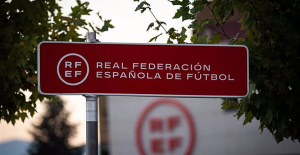 A Commission created by the CSD will supervise the RFEF
A Commission created by the CSD will supervise the RFEF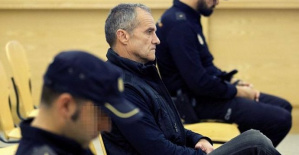 The AN judge prosecutes the former ETA leader for her responsibility in the kidnapping and murder of Miguel Ángel Blanco
The AN judge prosecutes the former ETA leader for her responsibility in the kidnapping and murder of Miguel Ángel Blanco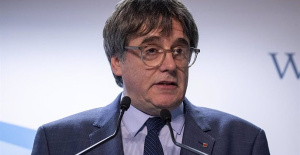 The European Parliament condemns the contacts of the Catalan independence movement with Russia and demands an investigation
The European Parliament condemns the contacts of the Catalan independence movement with Russia and demands an investigation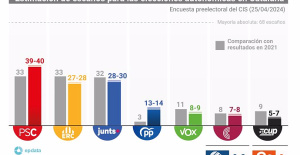 The PSC would win the Catalan elections with 39-40 seats, Junts would obtain 28-30 and ERC 27-28, according to the CIS
The PSC would win the Catalan elections with 39-40 seats, Junts would obtain 28-30 and ERC 27-28, according to the CIS How Blockchain in being used to shape the future
How Blockchain in being used to shape the future Not just BTC and ETH: Here Are Some More Interesting Coins Worth Focusing on
Not just BTC and ETH: Here Are Some More Interesting Coins Worth Focusing on Retrópolis brings the golden age of video games and computing to the UPV
Retrópolis brings the golden age of video games and computing to the UPV Looking for video games that value the neighborhoods of Valencia
Looking for video games that value the neighborhoods of Valencia UPV researchers improve the efficiency of air conditioning systems using a geothermal heat pump
UPV researchers improve the efficiency of air conditioning systems using a geothermal heat pump València is committed to citiverse and smart tourism to be "the reference technological hub of the Mediterranean"
València is committed to citiverse and smart tourism to be "the reference technological hub of the Mediterranean" A million people demonstrate in France against Macron's pension reform
A million people demonstrate in France against Macron's pension reform Russia launches several missiles against "critical infrastructure" in the city of Zaporizhia
Russia launches several missiles against "critical infrastructure" in the city of Zaporizhia A "procession" remembers the dead of the Calabria shipwreck as bodies continue to wash up on the shore
A "procession" remembers the dead of the Calabria shipwreck as bodies continue to wash up on the shore Prison sentences handed down for three prominent Hong Kong pro-democracy activists
Prison sentences handed down for three prominent Hong Kong pro-democracy activists ETH continues to leave trading platforms, Ethereum balance on exchanges lowest in 3 years
ETH continues to leave trading platforms, Ethereum balance on exchanges lowest in 3 years Investors invest $450 million in Consensys, Ethereum incubator now valued at $7 billion
Investors invest $450 million in Consensys, Ethereum incubator now valued at $7 billion Alchemy Integrates Ethereum L2 Product Starknet to Enhance Web3 Scalability at a Price 100x Lower Than L1 Fees
Alchemy Integrates Ethereum L2 Product Starknet to Enhance Web3 Scalability at a Price 100x Lower Than L1 Fees Mining Report: Bitcoin's Electricity Consumption Declines by 25% in Q1 2022
Mining Report: Bitcoin's Electricity Consumption Declines by 25% in Q1 2022 Oil-to-Bitcoin Mining Firm Crusoe Energy Systems Raised $505 Million
Oil-to-Bitcoin Mining Firm Crusoe Energy Systems Raised $505 Million Microbt reveals the latest Bitcoin mining rigs -- Machines produce up to 126 TH/s with custom 5nm chip design
Microbt reveals the latest Bitcoin mining rigs -- Machines produce up to 126 TH/s with custom 5nm chip design Bitcoin's Mining Difficulty Hits a Lifetime High, With More Than 90% of BTC Supply Issued
Bitcoin's Mining Difficulty Hits a Lifetime High, With More Than 90% of BTC Supply Issued The Biggest Movers are Near, EOS, and RUNE during Friday's Selloff
The Biggest Movers are Near, EOS, and RUNE during Friday's Selloff Global Markets Spooked by a Hawkish Fed and Covid, Stocks and Crypto Gain After Musk Buys Twitter
Global Markets Spooked by a Hawkish Fed and Covid, Stocks and Crypto Gain After Musk Buys Twitter Bitso to offset carbon emissions from the Trading Platform's ERC20, ETH, and BTC Transactions
Bitso to offset carbon emissions from the Trading Platform's ERC20, ETH, and BTC Transactions Draftkings Announces 2022 College Hoops NFT Selection for March Madness
Draftkings Announces 2022 College Hoops NFT Selection for March Madness
